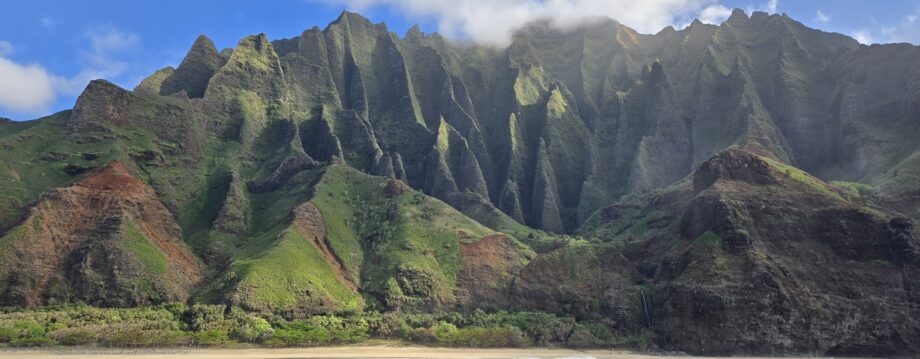September 12, 2006We met our guide at 9:00 AM in the lobby of the hotel and boarded our minibus to Kaunas, the second largest town of the country. Kaunas became the temporary capital when Vilnius was occupied by the Polish from 1920-1939. In 1939 Hitler and Stalin made a pact giving the Baltic states to Russia and Poland to Germany thus giving Vilnius back to Russia. Two weeks after the Hitler-Stalin Act WWII started.
As we entered the city, the tour guide pointed to an area along the river saying that the location is where the Jewish Ghettos were established during WWII. Near the end of WWII, the area was burned and destroyed along with its citizens. Prior to World War II, Kaunas had a large Jewish population and at the end of the war, it was reduced to a very small percentage.
After getting a bird’s-eye view of Kaunas, our first stop was the Church of Vytautas (Church of the Assumption of the Virgin Mary into Heaven) which was built-in the 15th Century. This is one of the first brick Gothic buildings in Kaunas and the oldest church in Kauanas. When the French Occupation was exchanged for Russian Occupation, the Roman catholic church became a Russian Orthodox Church. When the Germans took command in the 20th century, it was used to store wartime supplies.
We continued our Kaunas walking tour stopped by the House of Thunder (Perkuno Namas). It is called the house of thunder because it was originally a pagan sanctuary for the God of Thunder. It was originally built in the 15th century.
Just around the corner was the town square and the Kaunas Town Hall built-in the 16th century. Around the town square are small shops selling anything from wedding dresses to souvenir gifts (Amber, woodcraft, stuffed witches and soviet memorabilia). Although I enjoyed looking at what was being sold, I bought nothing.
The tour guide pointed out the shops had traditional ironwork signs that indicated the type of shop it was. She pointed at one part and said, we call it “Mother in Law eating ice cream”. Which is the sign for a drug store.
Our final stop of the walking tour was at the Arch-Cathedral Basilica of S. Peter and St. Paul, the largest church of Kaunas built-in 1408 but re-built and changed over the centuries. Unfortunately, the altar was being renovated so I could not take any photos. I would have really liked to have seen it because from the pictures, the altar looked like a complete work of art.
As we found our bus we saw the remains of the Kaunas castles and city walls built-in the 1300’s. Some of the structures have been restored with modern materials but I could still imagine the knights standing guard around the castle. Next to the City Wall is an interesting statue.





















Recent Comments